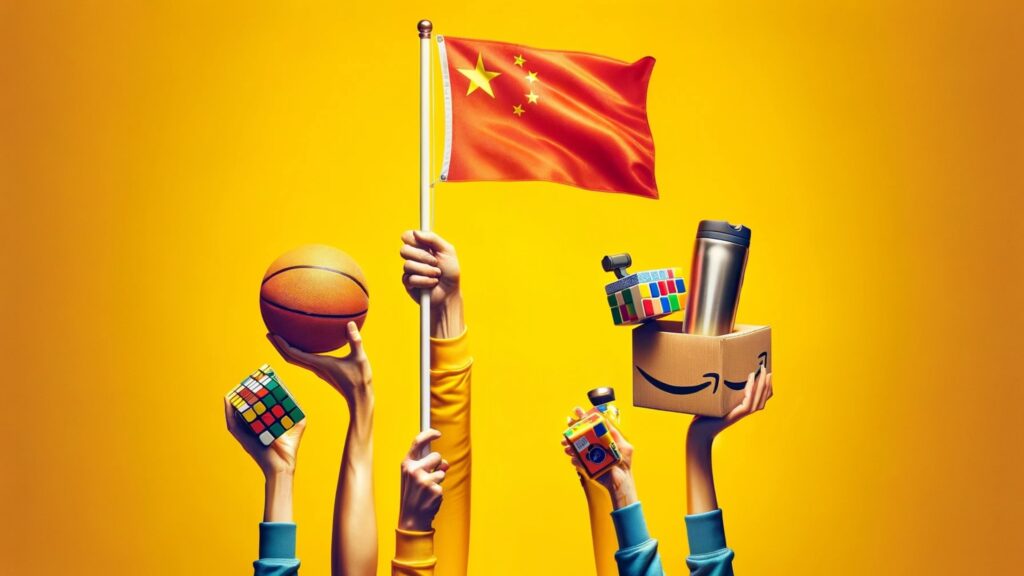Sourcing from China has become a vital strategy for businesses looking to leverage the extensive manufacturing capabilities and low manufacturing costs.
Whether you’re a seasoned business owner or a budding entrepreneur, understanding how to effectively source products from China can be a game-changer for your business, offering opportunities for growth and innovation.
How to buy products from China: An Overview
The globalisation of trade has made sourcing products in China an essential strategy for businesses around the world. Businesses should be looking to China if they are seeking to…
- improve production lead times;
- streamline their supply chain; and
- improve the quality of their products.
Sourcing products from China has transformed from simply a cost-saving tactic to now a strategic partnership model.
“One town, one product”
At the start of it’s industrial revolution, China understood that the key to improving the price and quality of a product is to ensure that all the single components of that product are made within a very short distance of each other.
If one town (or city, or province) focused its efforts on a specific product, then they would be able to make this product for the best quality and for the cheapest price worldwide. Before long pockets around the country were becoming the manufacturing mecca of their specific fields. Once this was tried and tested, it was repeated everywhere.
With advancing domestic logistics channels, the one town, one product phenomenon is not as prevalent as it one was, but there is still areas of the country that focus mostly on one particular area.
With the convenience of modern trade and shipping, businesses all around the world can leverage this manufacturing power and master their supply chain.
Understanding the Chinese Market
Dealing with manufacturers from China can be as easy as placing an order on a popular sourcing website, such as ChinaSourcing.com and Alibaba. There are plenty of Websites such as these that come with both their benefits and drawbacks.
(I will go more into that in another blog post in the future. Keep an eye out!)
In the meantime, I would like to talk about the importance of developing a relationship with your manufacturer.
Being successful in modern China is all about developing good relationships. Developing a good relationship with a supplier can lead to many positive benefits. Here are some examples of benefits that I personaly enjoy taking advantage of whenever I get the chance…
- willingness to customise and improve products;
- better pricing and/or credit agreements;
- shorter lead times and quicker delivery;
- new industry gossip and news;
- and many others.
It takes time to foster relationships that can reach this level of depth and trust.
My advice to anyone trying to become close with their suppliers and manufacturers in China would be the following…
- Go! Visit the factories in person.
- Develop a relationship with the owner of the factory and not just a sales representative. If you develop a personal relationship with the owner, they are the one calling the shots.
- Video call them and ask for an update on your production during their work hours.
- Send them photos of trips that you go on, or places you visited with your family.
At the end of the day, people sell to people, and the people at the top of the chain of command are the ones that make decisions. You want those people in your corner.
When sourcing products directly from China you should not only understand the market and the culture, but you should also be fully aware of the large benefits that it brings.
Benefits of Sourcing from China: Why China?
Cost Efficiency
China sourcing allows businesses to significantly reduce production costs without compromising on quality.
For example: We received a request from a client for a 200W portable laser for rust removal.
The person who sent us the inquiry told us that they had been looking on Amazon and Alibaba, and the lowest price they were able to find was still higher than they wanted to pay. Immediately we set to work, gathering the correct information and identifying suppliers.
The first port of call is, you may have guessed it, checking Amazon and Alibaba. We found a laser that met the specifications that the customer was looking for. The Amazon price was double the Alibaba price for one unit.
Then, we searched the local sourcing websites and found the exact same product for 20% less than the Alibaba price (only 40% of the Amazon price)
We then called the manufacturer of the portable rust removal laser and discussed it with them off the platform. They quoted us even lower! 35% less than the price we found on Alibaba. (now only 30% of the Amazon price)
The exact same product that is sold in North America, on Amazon and on many other sourcing websites straight from the supplier cost only a fraction of the price.
Quality and Innovation
Contrary to outdated “Made in China” stereotypes, Chinese manufacturers are at the forefront of innovation and quality in several sectors.
Of course, China manufactures it’s fair share of “tat”. For example the stuff that comes out of the Yiwu electronic markets that you find all over Aliexpress is less than top quality. This tat fills the shelves of our Dollar Generals, Pound Lands and corner shop hardware stores around the world.
Factories in China sometimes churn out cheap, poor quality products. But many are indeed capable of manufacturing products that are both high tech and high quality. The growth of lighthouse factories, unmanned facotories and smart factories have been mushrooming in China.
Historically, China has been the source of many innovations, scientific discoveries and inventions.
As a foreigner that came to China many years ago, I learned Chinese from textbooks with a China-centric point of view, I will never forget my Chinese teachers telling me countless times about the four great Chinese inventions. These are…
- Papermaking,
- The Compass,
- Gunpowder, and
- Printing (both woodblock and movable).
I had this explained to me so many times I will never be able to forget them.
Jump to modern times, and China continues to be at the forefront of inventions and manufacturing. Many Western companies rely on China’s vast and epic supply chain to manufacture their products. Drawn to the East by the enticing manufacturing capabilities, cost efficiencies, and effective supply chain networks. These are household names, such as…
- Tesla,
- Apple Inc.,
- Nike Inc.,
- Dyson,
- General Motors,
- Procter & Gamble, and
- many German Car manufacturers (See my blog post here when I visited the Volkswagen Car factory in Foshan!)
The move to manufacture in China has allowed all of these companies to scale their operations and meet global demand. Their experiences highlight the strategic importance of China as a manufacturing hub, offering insights into how sourcing products from China can be a pivotal component of global business strategies.
Supply Chain and Logistics
China’s advanced logistics network makes it an ideal location for sourcing products. Firstly, if you are visiting factories, you should make use of the incredible world class transportation system. China now has more high speed railway lines than the rest of the world combined! It couldn’t be easier to get around the place now, so really there is no excuse to go and visit places yourself.
Second, China has the world’s largest container port system, with several of the world’s largest ports located along its coastline. China has 34 major ports and more than 2,000 minor ports.
In 2022, the Port of Shanghai handled 47.3 TEU. In comparison, the largest port in Europe is Rotterdam, which handles 14.5 TEU per year.
TEU stands for “twenty-foot equivalent unit” – A TEU is based on the dimensions of a standard shipping container, which is 20 feet long, 8 feet wide, and 8.5 feet tall.
The ports in China are world class. The entire Eastern shore of China is peppered with ports that are so large that it is hard to believe.
In 2022, China’s sea ports handled 10.13 billion metric tons of cargo, while its river ports handled 5.55 billion metric tons. This is a 1.2 times increase from 2008, when China’s ports handled seven billion metric tons of cargo.
Needless to say, China is built for moving things around and getting your products from A to B.
Step-by-Step Tutorials for Sourcing from China
Define your specifications
The initial step in any product related journey always involves a clear definition of your product requirements and creating a design.
Depending on the resources that you have available, you can either develop a CAD drawing or sketch something on the back of a napkin. Either way this will help you get that
The goal of this stage is to align your needs with the capabilities of potential suppliers. This will set the stage for a successful sourcing strategy.
Once you have specified with yourself the exact materials, shapes, colours, shades, textures and size of the product that you want, you can go on the hunt for suppliers…
Research and Supplier Selection
The platform with by far the most options is Alibaba.com. There are other fantastic options, such as chinasources.com and globalsources.com. Lots of these platforms are very good for
When using these platforms, you must keep in mind that prices are about 30% more expensive than what you should pay or what the market price actually is. This is due to a number of reasons, but mainly because in order to garner success on the platform, trading companies and suppliers will invest a lot of money into marketing themselves on the platform. It is similar to Amazon in that regard.
Suppliers’ marketing investment on Alibaba is reflected in the price that you see on the platform.
Despite the inflated price, Alibaba is one of the best platforms to find suppliers. Every large factory is going to be there!
The best thing to do is to start conversations with the sales people on the Alibaba shops. If they are quick to respond and understand your request, then you should engage them.
Engaging and Negotiating with Suppliers
Engaging potential suppliers is not a difficult thing to do. It all starts with “hello!”. I do have some warnings and suggestions so you do not get taken advantage of:
Warnings:
- You are talking to a sales rep, not the boss of the factory. This person is working to get your order so they can take their commission. You should keep this in mind for a few reasons:
- Compliance – You must check very closely what certifications their factory has and whether they meet the requirements of the country that you intend to import into.
- Exporting – You must check whether they have an export licence! Sometimes factories do not have export licences. This is not good for a number of reasons, but mainly, when the goods are ready to be exported, they will expect you to organise a freight forwarder to handle shipping, which will end up costing you time and money.
- Price. When they say that their prices cannot go any lower, they aren’t being totally honest, they definitely can. They are trying everything in their power so that you do not eat into their commission.
- Sales reps do NOT have control over the boss of the factory, the engineers, or the people on the factory floor. Therefore if you ask them for customization they will have to go out of their way to achieve this. They will most likely be apprehensive to accept any form of customization that they are not used to.
- Sales reps are “YES men”. Do not believe everything that they say, which is why you shoud enter the conversation with some tough questions about the product prepared. Therefore you can put them on the spot, and let them know from the first interaction that you know what you are talking about when it comes to this product. Therefore I suggest that you…
Suggestions:
- Understand the market and the price of their competitors. You can use this as leverage when negotiating price. Make sure that no stone is left unturned when researching other factories and the different variations of the same product in the market. For any given product there will be dozens if not hundreds or thousands of suppliers, so this task normally will swallow up the majority of your time.
- Understand the product and the specifications and WHY the price varies from competitors and products. For example: Is product A manufactured with a better CPU? Is the material of a higher quality? Is the stitching done by hand? What is the printing process? There are so many reasons why a product should be more expensive than a competitor.
Once you have engaged a handful of suppliers, you should ask them to send you all the specification documents of their products, videos and images of the products being used and then finally, samples.
Samples are so important to guarantee you are protecting yourself. It will cost a bit of $$ to get the samples shipped to you but if you use a service, such as Gaia Sourcing’s ‘consolidation and packaging’ service, we will be able to bundle the samples together at our facility in Shenzhen and then send the samples all as one shipment.
Confirming samples will be crucial to ensuring quality control and sets the benchmark for production-quality across the main order. I suggest that you do not confirm the final order until the pre-production sample is confirmed to be EXACTLY what you want.
Quality Control and Compliance
Ensuring product quality and compliance with international standards is crucial. There are a few things that you should do to ensure a high quality and a smooth and successful sourcing operation. These are:
- Certifications – Ask for the necessary certifications that will ensure that you can import into the country of choice without any hassle. [image of the back of the Transcend packaging]
- Audits – You can pay an auditor to complete a factory audit or you can ask the factory to submit any necessary reports, such as a modern slavery report.
- Samples – I suggest that you check a sample twice throughout the sourcing process.
- Pre-production sample. This is to help confirm that the factory is capable of producing your desired quality.
- Pre-shipment sample. This is to ensure that the bulk-production has been made to the same quality as the pre-production sample. Ideally you want to hold both products in your hands and they should be identical. If they are the same, then you can release the final payment and the factory will ship the goods. If there is any difference in quality between the two samples then this is when you should be addressing it! You should not release payment until you are confident that
- 3rd party inspections – It is recommended to hire a 3rd party inspection company to undergo a quality inspection before the goods are released. When it comes to inspection companies the “big-three” are Intertek, SGS, and Bureau Veritas. These are our most trusted inspection companies and we can consistently rely on them to Inspections cost between 250-600 USD. They are completely worth it, as you will be able to get a top-down understanding about wh. The best thing about completing 3rd party inspections is that the inspectors are true professionals. thoroughly check things. Nothing slips through the cracks when these guys are about. They know their stuff inside and out!
Other than these concrete ways to guarantee your supplier adheres to quality controls and complies with your importation standards, one of the best ways to ensure your products meet the criteria is to develop a very good relationship with the supplier themselves. As I have said time and time before (maybe not in this blog post) people sell to people! You need to give the people what they want, and that is more than just a transaction, they would like a partner and someone to create a meaningful relationship with. Nothing can guarantee you a successful product more than a very solid relationship with a supplier.
Logistics, Shipping, and Customs
Some practical advice on ensuring smooth and efficient transport of goods ‘directly from China’:
Planes, Trains and… Seafaring vessels
There are essentially three options for shipping products from China: sea, rail or air. Shipping by road is ruled out of the equation, unless you are in a neighbouring country such as Vietnam, Russia or Laos.
Sea Freight (Ocean shipping)
The cost of shipping and logistics has risen drastically over the past few years. This being said, still the most economical way to move large batches of products from A to B is by sea.
The largest Seafaring container ships have capacity over 20,000 TEUs.
By far the most ideal option for larger shipments is to make the purchase fill a full container or FCL (Full Container Load). If you cannot fill a container, then the next best option is LCL (Less than Container Load). In this case you share container space with other businesses, and you can hire a Freight Forwarding company to book space on a container that is shipping out to the same destination. The drawbacks of sea freight are that shipping from China to Europe or China to The Americas have very slow transit times, ranging from 15 to 40 days depending on destination.
Air Freight
The next option is Air freight. Due to its substantially high price per unit shipped than sea freight, I only recommend air freight for extremely urgent shipments, or when shipping samples. Air-freight often takes 5-7 days for international delivery. There are more expensive express air freight courier services like DHL, FedEx, or UPS offer expedited shipping for smaller parcels and urgent deliveries that often arriving in 2-5 days.
Rail Freight
China-Europe Rail Freight: This option connects China with Europe via the Silk Road. It’s faster than sea freight but more affordable than air. There are a few problems with this method, in that it is limited to certain areas of Europe and the route is subject to geopolitical factors, mainly because the route passes throught Russia. It typically takes 15-20 days, a middle ground between air and sea.
Warning, you must check: does the factory you are purchasing from has an export licence?! If they do not, then be sure to work with a company such as us (Gaia Sourcing) that does have an export licence.
Freight forwarders and customs clearance
Using a quality freight forwarder is the key to making your life easy when it comes to completing logistics, shipping and customs. If you use a good freight forwarder, they will take care of the majority of things for you. Be sure to provide all of the necessary information to the freight forwarder, and they will handle the rest. The infomation and documentation that you will need to provide for customs clearance:
- Commercial invoice
- Packing list
- Bill of Lading or Airway Bill
- Export Licence
- Customs Declaration Form
- Certificate of origin
- Inspection Certificates (if required)
- Fumigation certificate (if required)
- Export Contract
- Tax Refund Application (if applicable)
- Insurance Certificate (if applicable)
- Product-specific decuments
Once these documents have been prepared, you should ensure all documents are accurate and match the shipment details. Then submit the customs declaration either online through China’s customs portal or through a freight forwarder.
In some rare cases, the Chinese customs may physically inspect the goods to verify the declared information. Once cleared, the goods are allowed to be exported. The timeframe for customs clearance is about 4-5 days.
Conclusion: The Strategic Advantage of Sourcing from China
In conclusion, ‘sourcing from China’ offers a strategic advantage for businesses looking to innovate, cut costs, and streamline their supply chains. I hope that this blog post has provided a comprehensive guide to navigating the complexities of sourcing products directly from China. From defining the specifications to the logistical challenges of shipping and customs. With the right approach and partnerships, anyone can leverage the vast opportunities presented by China’s manufacturing sector to achieve their production objectives.







